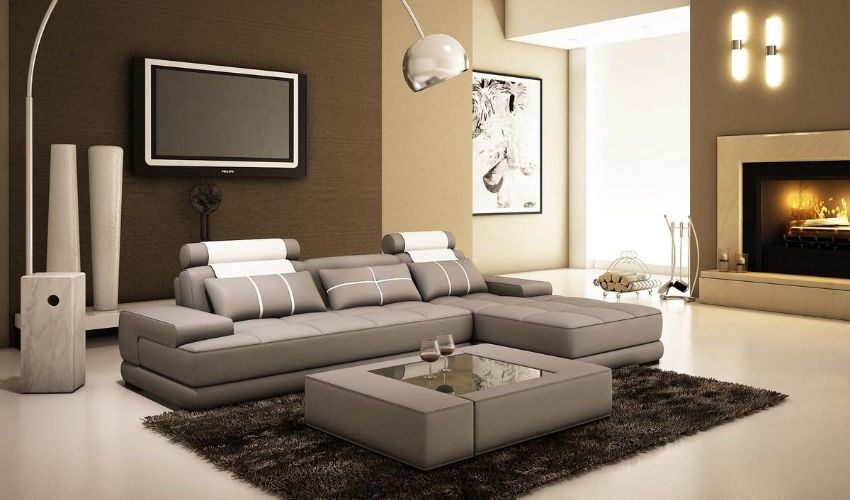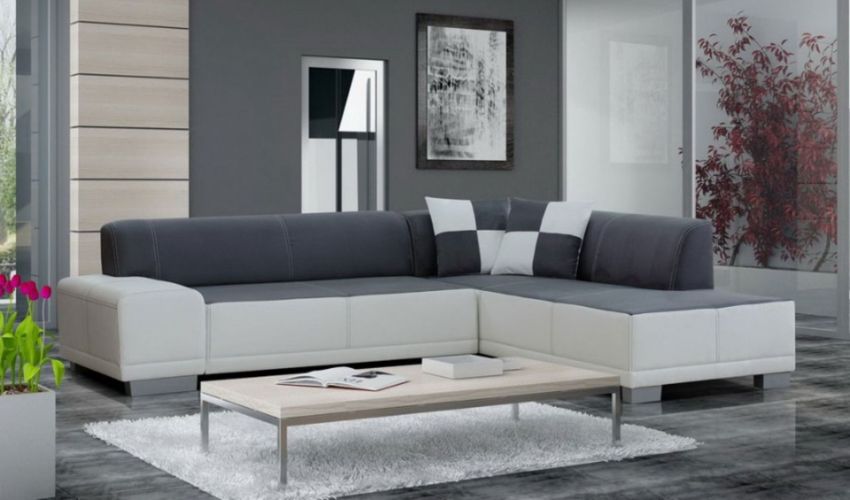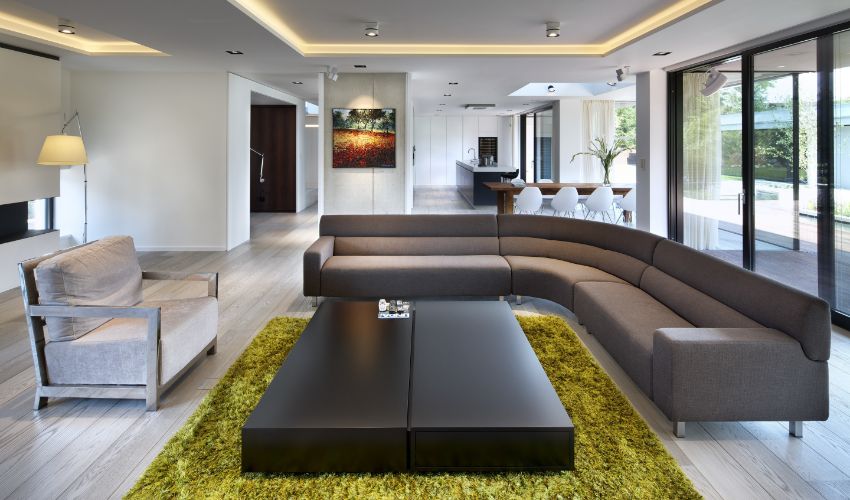Your living room serves as the focal point of your home, a place to unwind after a long day, entertain guests, and create cherished memories with your loved ones. The furniture selection can have a significant impact on how cozy and inviting this lively area seems. Speaking of furnishing, the L-shaped couch stands out among the different possibilities as an adaptable and fashionable solution that is ideal for contemporary living spaces.
Here, we’ll guide you step-by-step through the process of designing a living space that is not only functional but also a reflection of your style, from maximizing the room’s flow to selecting the appropriate accessories!
1. Assess Your Living Room Space

Before you start rearranging furniture or shopping for a new L-shaped sofa, it’s essential to have accurate measurements of your living room. Take a measuring tape and obtain the following dimensions:
- Length and width of the room: Measure the longest and widest points in your living room to get a clear idea of its size.
- Ceiling height: The height of your ceiling can influence your choice of furniture and lighting fixtures.
- Doorways and entry points: Measure the width and height of doorways, as well as the clearance around them. This will ensure your L-shaped sofa can be comfortably brought into the room.
- Window placements: Note the locations and dimensions of windows, as they can affect both furniture placement and lighting.
2. Choosing the Proper L-shaped Sofa

Making the ideal L-shaped couch choice for your living room furniture is an important choice that blends comfort and style. It requires picking the right size and shape, taking into account the types of upholstery and their colors, and managing every aspect within your budget.
The size and design of your L-shaped sofa should come first. Confirm the size fits with the design of your living room by measuring the space. Also, choose whether you want a fixed L-shaped sofa with a specified shape or one that is modular and customizable.
Equally significant are the upholstery material and color selections. Consider your preferences and way of life while selecting materials like leather, fabric, or microfiber.
And each one has its own advantages and disadvantages. Choose a color that complements your whole color scheme and design style, even if you want to make a bold statement or a subtle compliment. Financial considerations are essential during the complete process.
3. Pick the Focal Point

Your living area will have more personality and attract more attention if you make a focal point there. It entails choosing a focal point—a TV, fireplace, sizable window, or piece of art, for example—and placing your L-shaped sofa such that it offers the best possible view of it.
Think about the focus point alternatives in your living space. Use a built-in element like a fireplace as a natural focal point if you have one. As an alternative, dedicate a wall for your TV or make a statement with artwork or decorative accents.
Strategically place your L-shaped sofa in respect to the selected focal point. Make sure the sofa faces your TV directly if it’s the main attraction for a pleasant watching experience. Place the sofa around a fireplace so people can talk while enjoying the ambiance. Avoid visual distractions while sitting on the sofa to maintain a clean line of sight to the focus subject.
4. Create Balance and Harmony

While the L-shaped sofa is the star of the show, other furniture pieces play supporting roles in your living room’s design. Here’s how to arrange them for balance and harmony:
- Coffee Table: Place a coffee table within easy reach of the sofa. Make sure it fits the room properly and complements the sofa’s design.
- Side Tables: Consider adding side tables to provide convenient surfaces for drinks, snacks, or lamps. Position them next to seating areas.
- Bookshelves or Cabinets: If you have bookshelves or cabinets, use them to display decor, books, or multimedia equipment. Arrange them on walls or corners to maximize storage and style.
5. Traffic Flow and Accessibility

A well-arranged living room should facilitate smooth traffic flow. Here’s how to achieve it:
- Define Pathways: Identify the natural pathways people use to move through the room. Keep these pathways clear of furniture to prevent congestion.
- Open Spaces: Ensure that there are open areas in your living room where people can move freely. Avoid creating tight, cluttered corners that inhibit movement.
6. Personalize with Accessories

Accessories are the finishing touches that make your living room truly yours. Here’s how to personalize with cushions, throws, and rugs:
- Cushions and Throws: Incorporate sofa cushions and throws in colors and patterns that reflect your style. Mix and match textures and designs to add depth and warmth to your sofa.
- Rugs: Choose a mat that fits the size of your seating area and complements your overall decor. A well-placed rug can define the space and add a cozy feel to your living room.
- Add Decorative Elements: Try to add more visually appealing decorative items that enhance the overall look of your living room.
7. Lighting Considerations

Proper lighting can transform the ambiance of your living room. Consider these lighting sources:
- Overhead Lighting: Install overhead lighting fixtures like chandeliers or pendant lights to improve overall illumination.
- Table Lamps: Place table lamps on side tables to create ambient lighting and add a warm, inviting glow.
- Floor Lamps: Floor lamps can serve as task lighting for reading nooks or accent lighting to highlight specific areas.
Closing Thoughts!
Your living room is more than simply a room; it’s a picture of your character and a gathering spot. It has the potential to become the center of your house with the appropriate setup and customized accents. You can make sure that your living room and L-shaped couch stay in fantastic condition and in the best arrangement style for years to come by the simple aforementioned maintenance and arranging tips.




